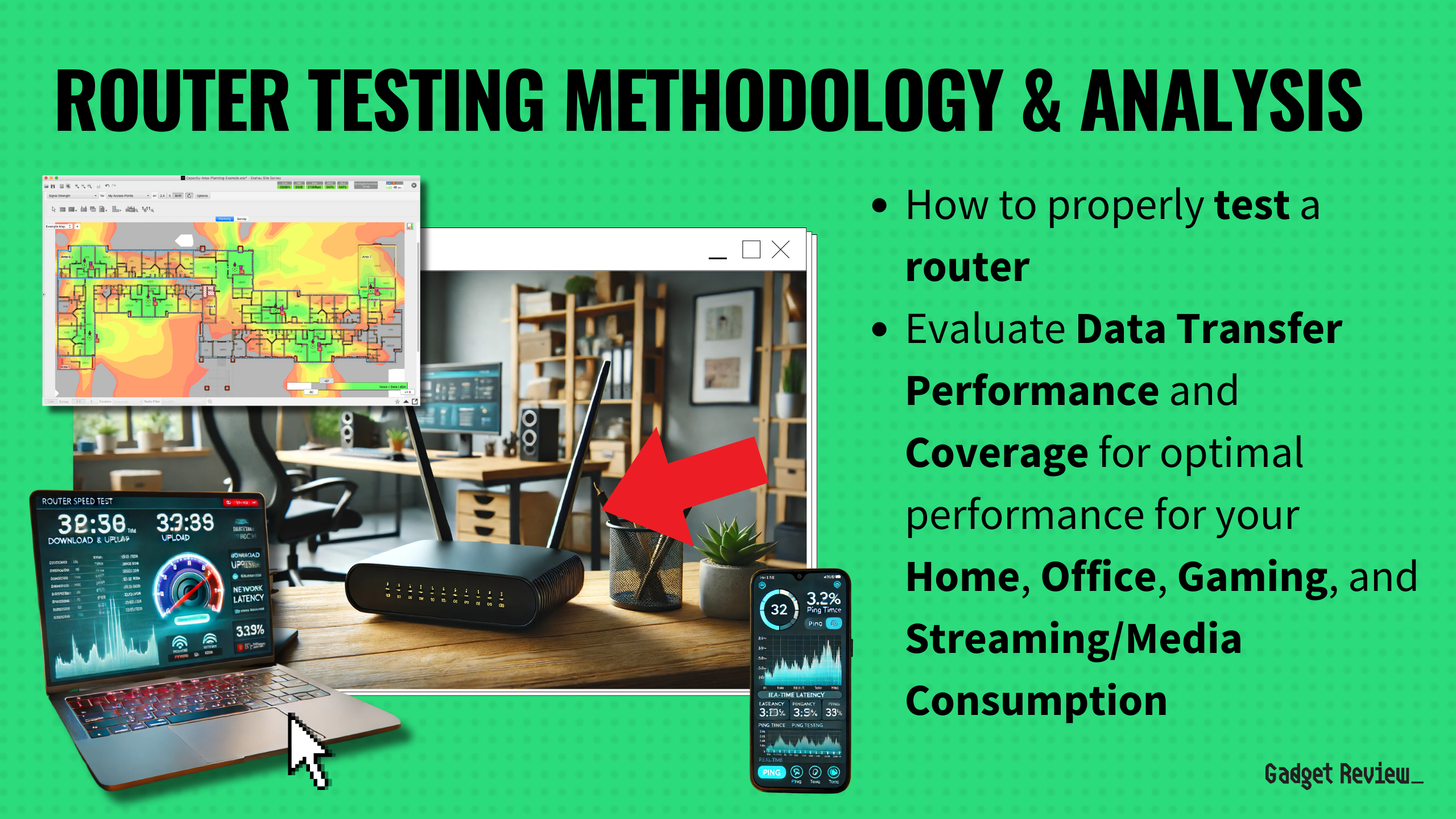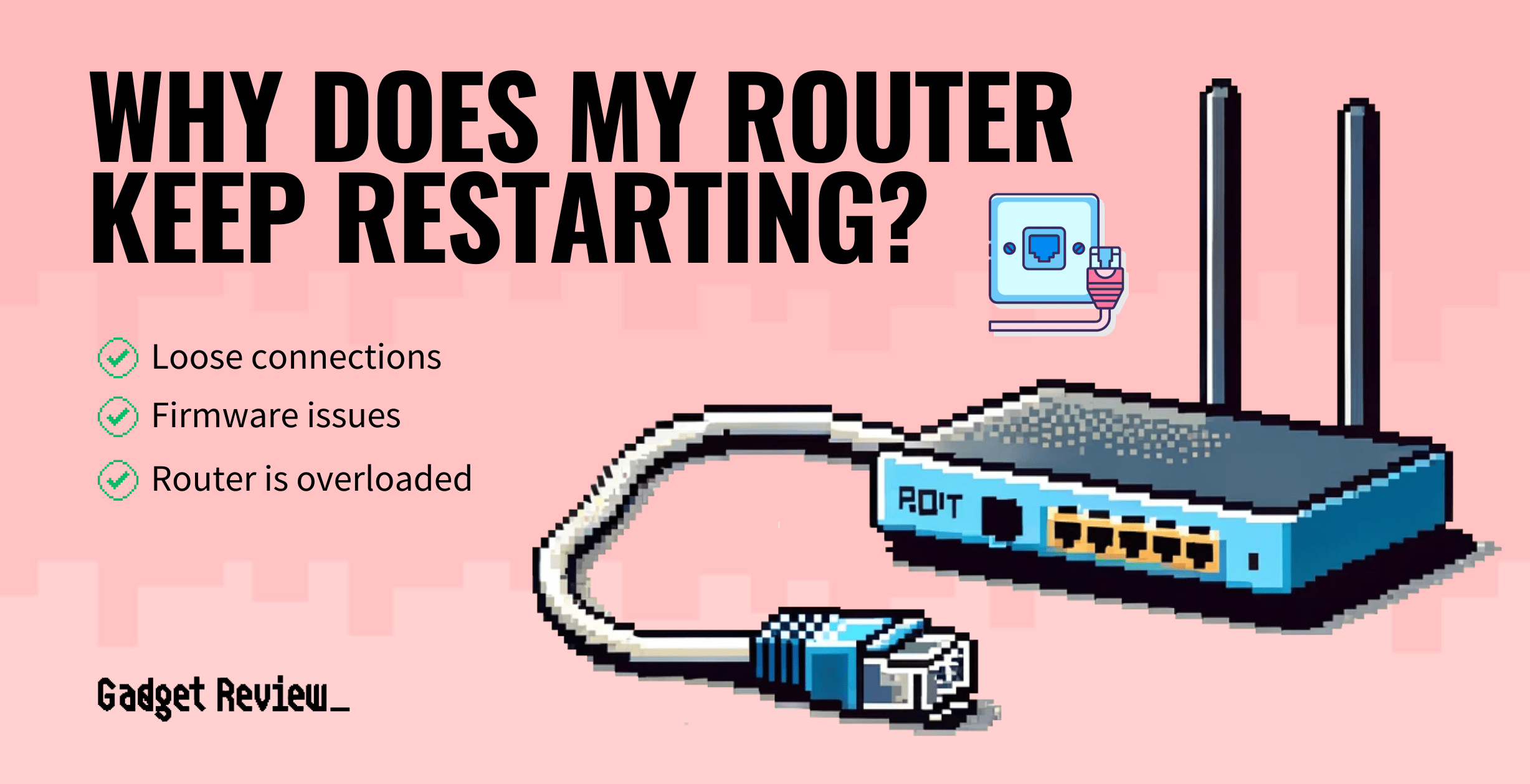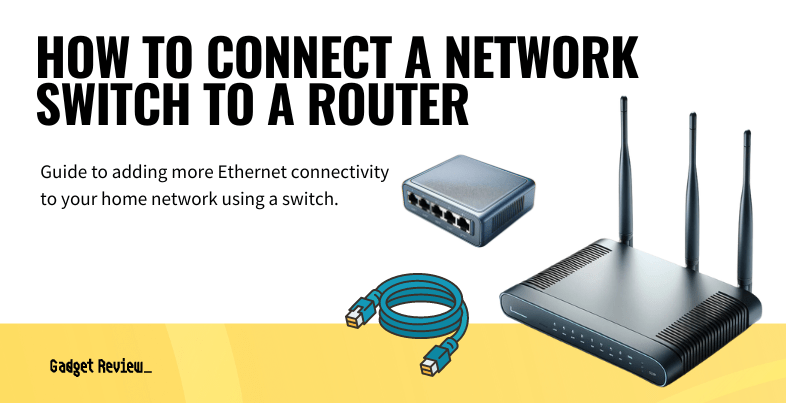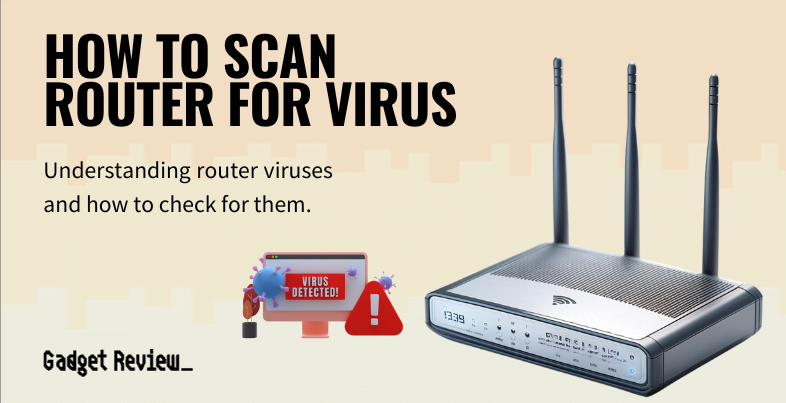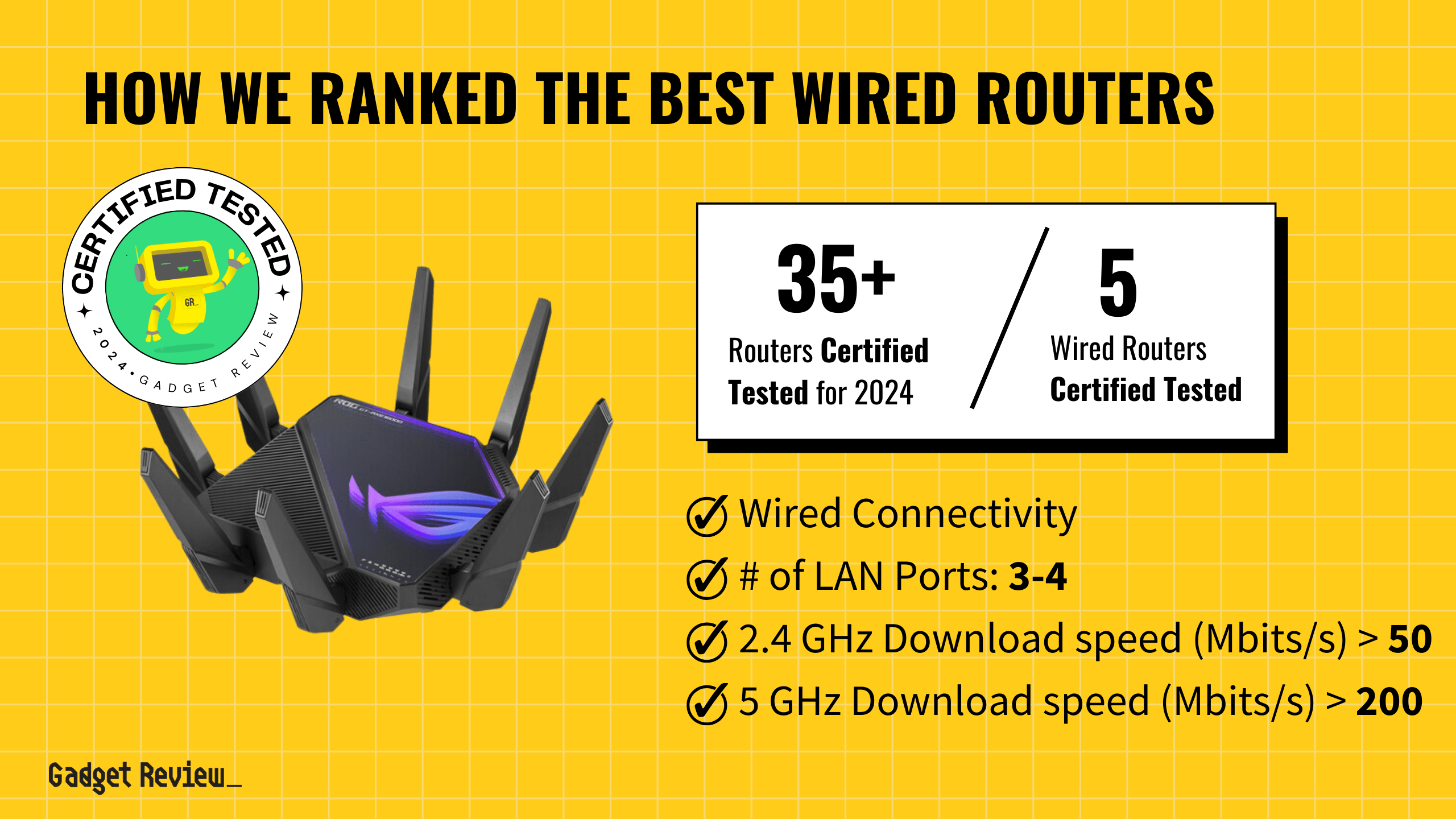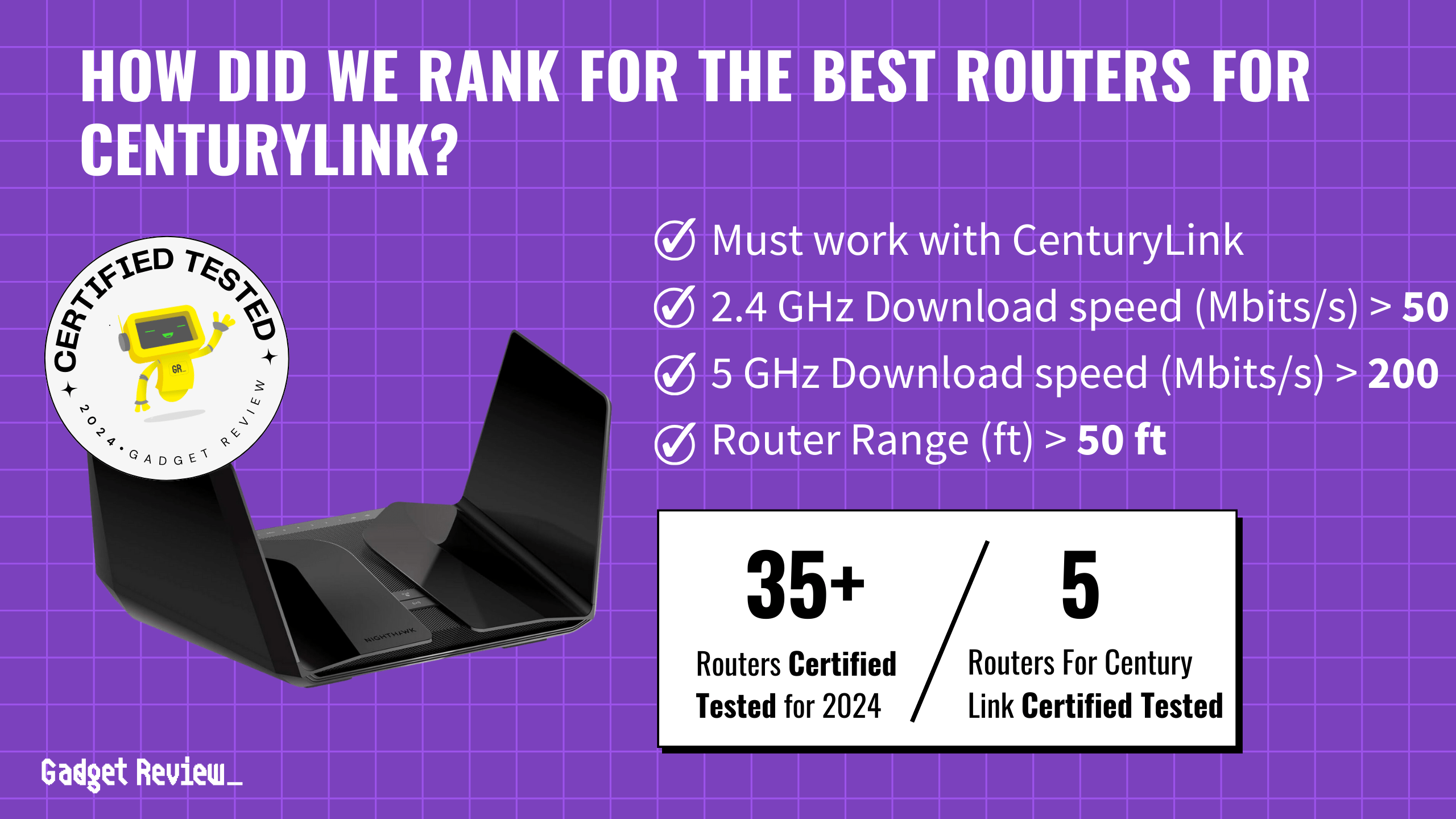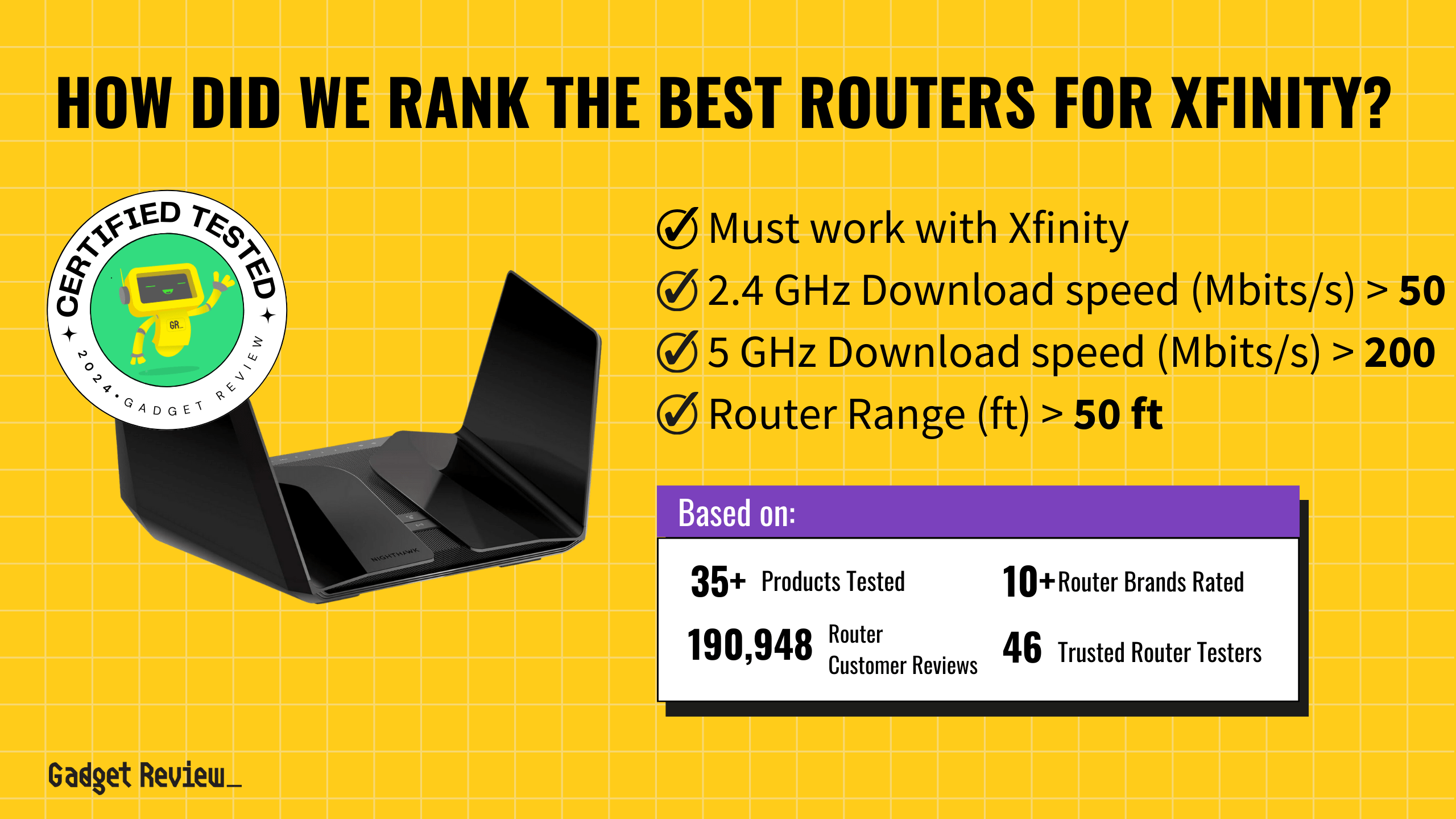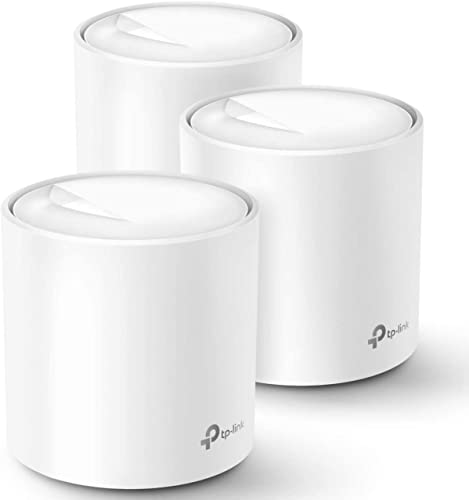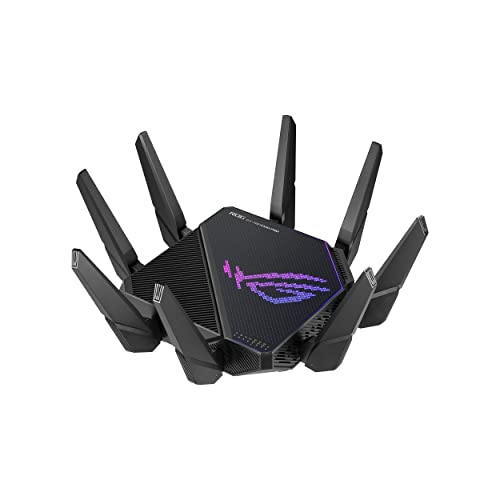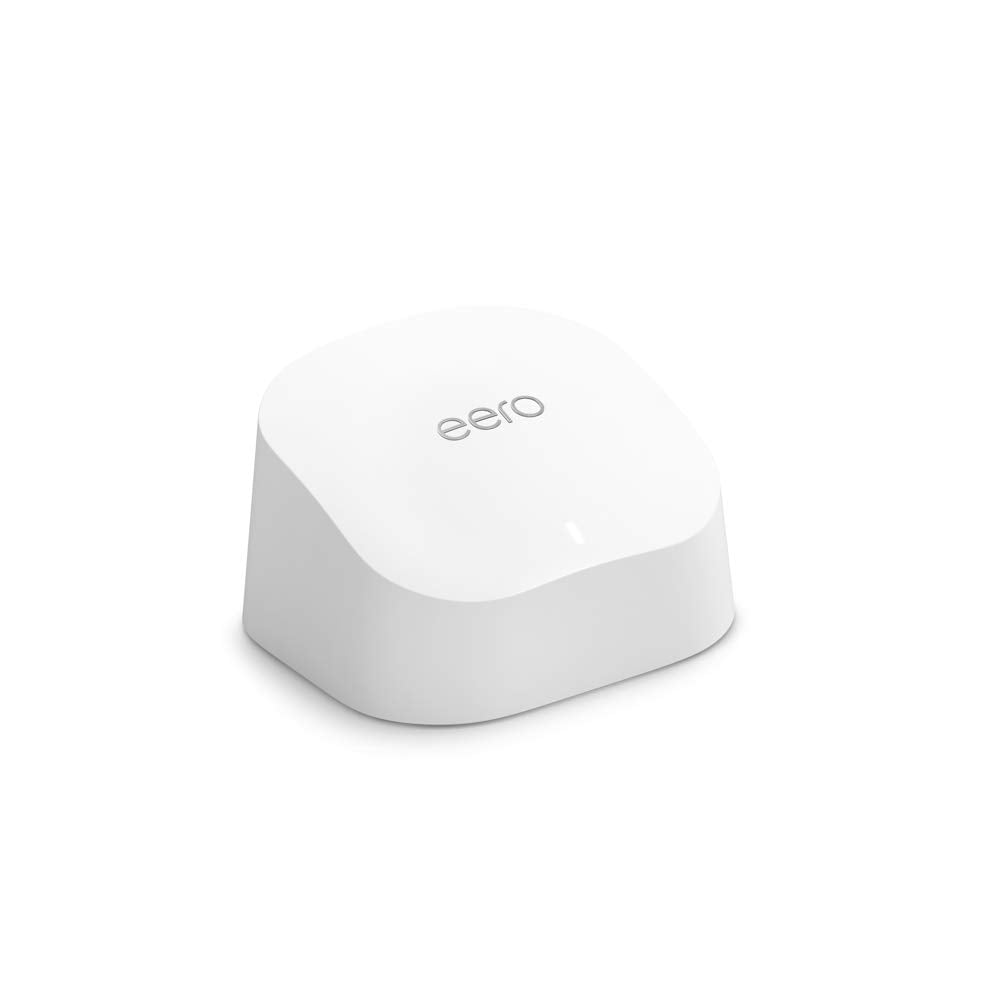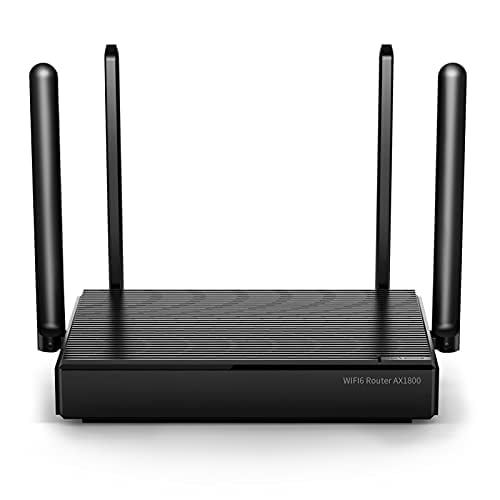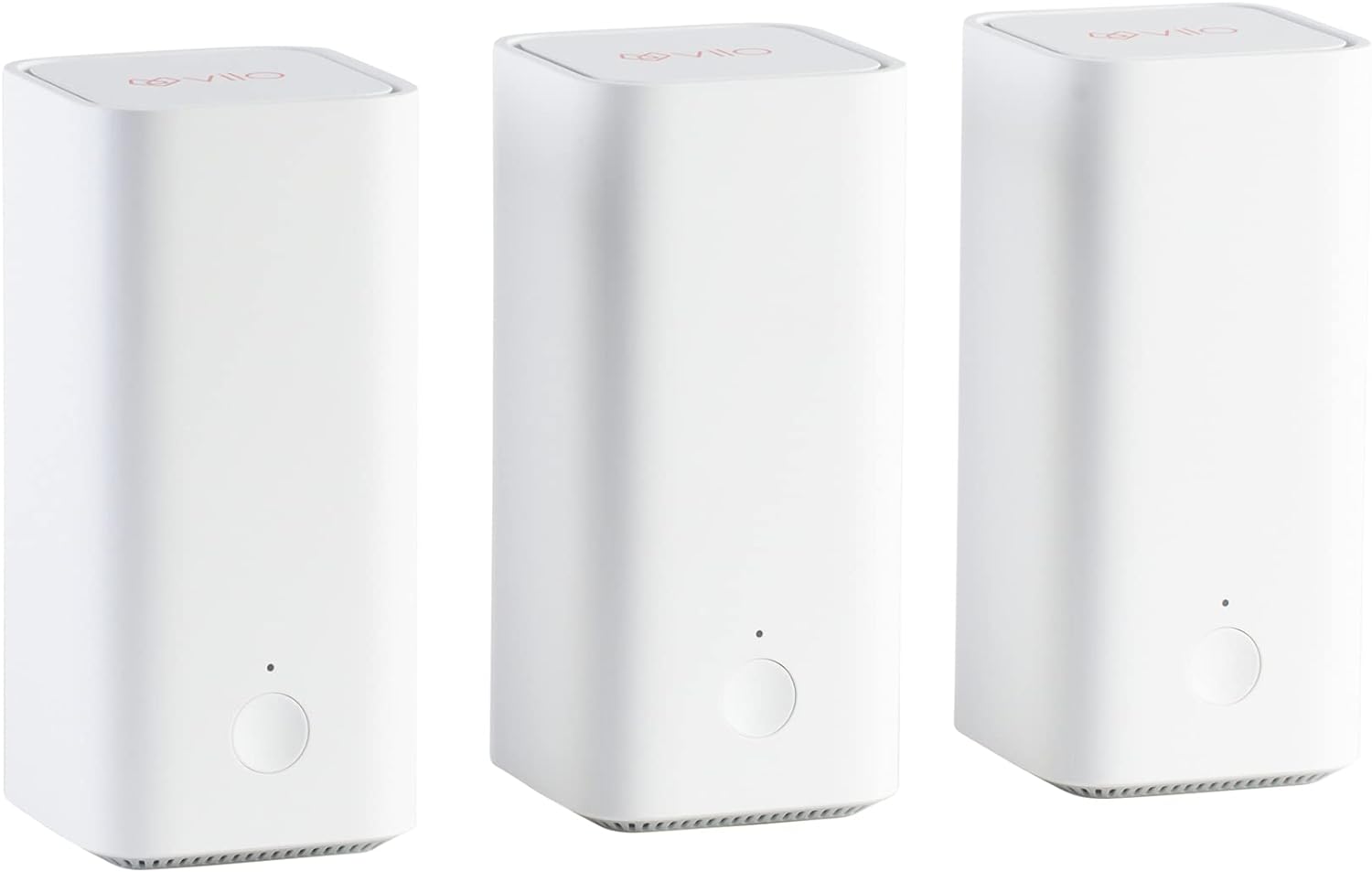When you’re selecting the best router for Spectrum, reliability and coverage are paramount. Look for a router that supports a 2.4GHz download speed exceeding 50 Mbps and a 5GHz download speed surpassing 200 Mbps. Key features include low latency under 30ms, a range greater than 50 feet, and quality of service (QoS) prioritization to handle high-bandwidth activities like streaming and gaming.
We evaluated 37 routers and assessed 194,551 reviews to identify the top five routers that excelled in these areas. Using our AI-powered True Score, we filtered out unreliable and fake reviews, ensuring you get authentic insights. The winning routers demonstrated excellent performance in real-world testing, with certified download speeds. These excellent routers provide the best internet experience for Spectrum users.
How Did We Rank the Best Router for Spectrum?
Finding the best router for Spectrum involves sifting through a sea of information, so we analyzed over 200 sites to bring you the most reliable guide. We examined testing methods, evaluated customer reviews, and scrutinized expert analyses. Our approach pinpointed 2 required test results, 2 desirable features, and 1 critical specification. This detailed examination, backed by our true score system, ensures that our recommendations are both authoritative and tailored to your needs.
Our commitment to unbiased reviews is powered by our ‘True Score’ system, targeting low quality and fake reviews. When you shop through our links, you’re backing our mission. Dive deeper to see how.
?️ Minimum Specifications
- Must work with Spectrum.
? Test Criteria
- 2.4 GHz Download Speed: A download speed on the 2.4 GHz band of at least 50 Mbits.
- 5 GHz Download Speed: A download speed on the 5 GHz band of at least 200 Mbits.
? “Nice To Haves”
- Router Range: A range of at least 50 feet before the signal from the router begins to become noticeably weaker.
- Latency: A latency of 30 ms or less.
Latest Updates
- 06/16/2024: Republished the list to include the best routers for Spectrum based on our True Score system.
Top Router for Spectrum For 2025
Prices accurate at the time of publishing

Best Overall

Runner Up

Best Value

Best Budget

Best Mid-Range

Premium Pick
Asus RT-AX86S
Best For Long Range
Asus RT-AX86S suits Spectrum users on a budget with large spaces, offering reliable 5 GHz connectivity for activities like streaming, gaming, and file sharing.
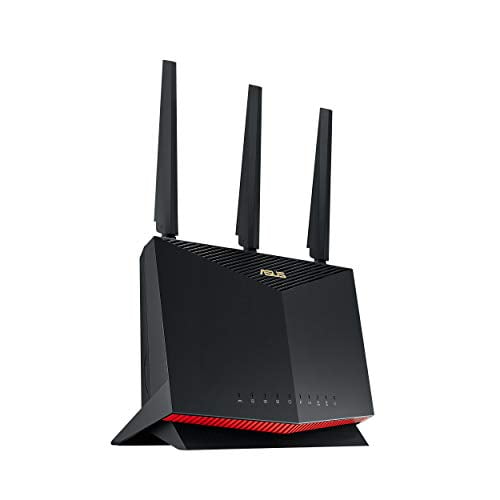
True Score
83833Experts
891kCustomers
Absolutely Fresh
 SAVE $150$249.99$99.99
SAVE $150$249.99$99.99Read More
Snapshot
Reasons to Buy
- Fast WiFi and download speeds
- Incredible range of coverage
- Easy installation and set up
- Low Latency
Reasons to Avoid
- Lacks Backhaul and Mesh Networking
Specifications

# of LAN Ports 4 
Frequency Bands 2.4 GHz, 5.0 GHz 
MU-MIMO Support Yes 
Wireless Standard AC, AX, N 
Mesh System No 
Quality of Service Prioritization Yes 
# of Phone Ports n/a 
# of WAN Ports 1 
App Compatible Yes 
Available Storage 256MB 
Band Technology Dual 
Data Encryption Type WPA, WPA-Enterprise, WPA2, WPA2-Enterprise, WPA3, WPA3-Enterprise, WPS 
Energy Star Certified No 
Integrated Modem No 
LAN Ports 4 Gb Ethernet 
Number of Antennas 4 
Parental Controls Yes 
Processor Cores Dual 
Processor Speed 1.8GHz 
WiFi Range 5400 sq. ft 
WiFi Speed 5.7 Gb 
Wired Speed – All Specs
Test Results
2.4 GHz Download speed (Mbits/s) 89 5 GHz Download speed (Mbits/s) 563 6 Ghz Download speed (Mbits/s) 0 Latency (ms) 15 Router Range (ft) 140 2.4 GHz Upload speed (Mbits/s) 0 5 GHz Upload speed (Mbits/s) 23 6 Ghz Upload speed (Mbits/s) 0 All Tests
All Retailers
- $99.99$250Save $150
- $202.24$225Save $23
Our Verdict
If you’re a Spectrum user with a large home needing reliable internet, the Asus RT-AX86S provides a great 5 GHz performance and range. With download speeds reaching 563 Mbits/s and upload speeds of 23 Mbits/s on the 5 GHz band, it supports bandwidth-intensive activities easily, like 4K video streaming, online gaming, and large file transfers for work. The 2.4 GHz band delivers 89 Mbits/s for downloads, catering to IoT devices and everyday web browsing. Although it lacks a 6 GHz band, its 5 GHz performance meets the demands of digital-heavy lifestyles, making it a solid choice at a budget-friendly price.
The router’s Wi-Fi reach extends to 140 ft, providing expansive and dependable coverage ideal for larger spaces. With a latency of just 15 ms, the Asus RT-AX86S promotes quick response times essential for uninterrupted gaming and smooth video calls.
Compared to the other affordable option, the TP-Link Archer AXE75, the Asus RT-AX86S has over double the router range, making it the better option if you live in a large space. The TP-Link has a better latency versus the Asus, so if you can’t afford delays, opt for the TP-Link instead.
Despite its less impressive performance on the 2.4 GHz band, the Asus’ superior 5 GHz speed and range make it a reliable device for avid gamers, streamers, and smart home setups. If you’re a Spectrum customer on a budget, this router offers reliability, range, and fast performance and will make your home network run smoothly.
Read Less

Best Overall

Runner Up

Best Value

Best Budget

Best Mid-Range

Premium Pick
Netgear Nighthawk RAXE300
Best For Secure
Netgear Nighthawk RAXE300 excels for gamers and streamers with Spectrum, offering robust connectivity, high speeds, and extensive coverage.
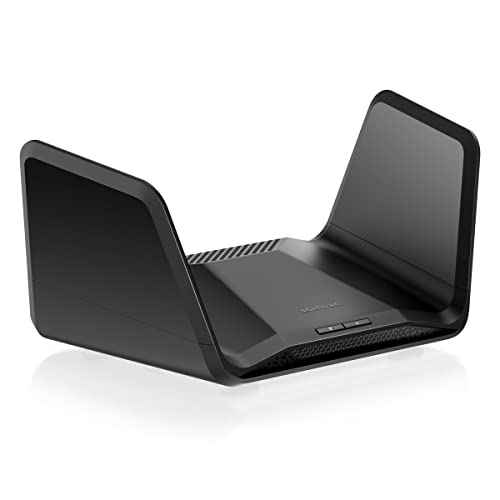
True Score
83829Experts
894kCustomers
Absolutely Fresh
 SAVE $135$299.99$164.99
SAVE $135$299.99$164.99Read More
Snapshot
Reasons to Buy
- Superb Wi-Fi speeds
- Wide range
- Simple setup
Reasons to Avoid
- Limited range (6GHz)
- No USB A port
- Subscription-based security solutions
Specifications

# of LAN Ports 6 
Frequency Bands 2.4 GHz, 5.0 GHz, 6.0 GHz 
MU-MIMO Support Yes 
Wireless Standard AC, AX, N 
Mesh System No 
Quality of Service Prioritization No 
# of Phone Ports 1 
# of WAN Ports 1 
App Compatible Yes 
Available Storage 256MB 
Band Technology Tri 
Data Encryption Type WPA-PSK, WPA2-PSK, WPA3 
Energy Star Certified No 
Integrated Modem No 
LAN Ports 4 Gb Ethernet 
Number of Antennas 6 
Parental Controls Yes 
Processor Cores Quad 
Processor Speed 1.7GHz 
WiFi Range 2500 sq.ft 
WiFi Speed 7.8 Gb 
Wired Speed 1000 Mb All Specs
Test Results
2.4 GHz Download speed (Mbits/s) 222 5 GHz Download speed (Mbits/s) 852 6 Ghz Download speed (Mbits/s) 757 Latency (ms) 5 Router Range (ft) 170 2.4 GHz Upload speed (Mbits/s) 0 5 GHz Upload speed (Mbits/s) 175 6 Ghz Upload speed (Mbits/s) 247 All Tests
All Retailers
- $164.99$300Save $135
- $239.97$400Save $160
- $299.99
- $379.99$399Save $19
Our Verdict
If you’re a gamer or streamer in a large household, the Netgear Nighthawk RAXE300 is an outstanding router that delivers reliable connectivity for your Spectrum internet. It has great download speeds—a best-in-class 221.65 Mbits/s on the 2.4 GHz band, 851.6 Mbits/s on the 5 GHz band, and 756.8 Mbits/s on the 6 GHz band. This means it supports intense activities like competitive gaming, high-definition streaming, and virtual reality experiences. It’s also proficient in upload performance, offering 175 Mbits/s on the 5 GHz and 247.2 Mbits/s on the 6 GHz bands, managing quick data transfers for high-quality video content, lag-free gaming, and cloud storage operations.
If you need minimal latency for online gaming or seamless connectivity in a large area, this router delivers a best-in-class latency of 5 ms and a superior reach of 170 ft. Additionally, it features strong security measures with the most advanced wireless standards (AC, AX, N), making it a forward-thinking choice for your home network.
If you compare it to the Asus RT-AX86S, the Nighthawk RAXE300 offers superior speed, a larger range, and reduced latency, making it a better option for a large household with significant streaming and online gaming demands.
With its high performance across speed, latency, and coverage, the Netgear Nighthawk RAXE300 is a leading option for Spectrum users looking for a top-tier router. Though the price point may be higher than budget models, its advanced features and robust performance provide great value if you need a comprehensive solution to meet the needs of a demanding, high-traffic network.
Read Less

Best Overall

Runner Up

Best Value

Best Budget

Best Mid-Range

Premium Pick
Asus ROG GT6 Mesh
Best For Streaming
Asus ROG GT6 Mesh suits Spectrum users with large homes, offering seamless online experiences and superior upload speeds for content creation and gaming.

True Score
80826Experts
854kCustomers
Absolutely Fresh
 $456.99
$456.99Read More
Snapshot
Reasons to Buy
- Fast Download/Upload Speed
- Easy to install and operate
Reasons to Avoid
- WiFi speed drops off at long range
- Connection range is limited
- Limited USB Connectivity
- Mediocre Latency
Specifications

# of LAN Ports 3 
Frequency Bands 2.4 GHz, 5.0 GHz 
MU-MIMO Support Yes 
Wireless Standard AC, AX, N 
Mesh System Yes 
Quality of Service Prioritization Yes 
# of Phone Ports n/a 
# of WAN Ports 1 
App Compatible Yes 
Available Storage 256MB 
Band Technology Tri 
Data Encryption Type WEP, WPA-Enterprise, WPA-PSK, WPA2-Enterprise, WPA3-Personal 
Energy Star Certified No 
Integrated Modem No 
LAN Ports 3 Gb Ethernet 
Number of Antennas 9 
Parental Controls Yes 
Processor Cores Triple 
Processor Speed 1.7GHz 
WiFi Range 5800 sq. ft 
WiFi Speed 2.6 Gb 
Wired Speed 2500 Mb All Specs
Test Results
2.4 GHz Download speed (Mbits/s) 139 5 GHz Download speed (Mbits/s) 701 6 Ghz Download speed (Mbits/s) 0 Latency (ms) 22 Router Range (ft) 95 2.4 GHz Upload speed (Mbits/s) 112 5 GHz Upload speed (Mbits/s) 619 6 Ghz Upload speed (Mbits/s) 0 All Tests
All Retailers
- $456.99
- $479.99
Our Verdict
If you’re a Spectrum user interested in content creation or have a large living space, the Asus ROG GT6 Mesh is an amazing solution for a seamless online experience. It offers best-in-class upload speeds of 618.5 Mbits/s on the 5 GHz band and 111.9 Mbits/s on the 2.4GHz band, making it ideal for 4K streaming, responsive online gaming, and managing numerous devices simultaneously. The Asus’s 2.4 GHz band delivers decent download speeds of 139.35 Mbits/s, and you get speeds of 701.3 Mbits/s for 5 GHz, making it a reliable choice for daily web use and smart home connectivity.
If extensive Wi-Fi coverage is non-negotiable, the ROG GT6’s range of 95 ft eliminates lag and buffering throughout large homes. With a latency of 22 ms, it supports a consistently reliable and quick internet connection for most online activities.
When comparing it against the Asus RT-AX86S, the Asus offers a better range and latency at a more economical price if you can’t accept any delays and live in a large space. On the other hand, the ROG GT6 is a faster router that addresses Wi-Fi dead zones.
For Spectrum customers who need to upload content or stream efficiently, especially if you live in large homes with multiple rooms, the ROG GT6 delivers speedy uploads and robust support for extensive networks. Despite its premium cost and slightly higher latency, it’s still a sound investment for competitive gamers and professionals needing efficient, large-scale file uploads.
Read Less

Best Overall

Runner Up

Best Value

Best Budget

Best Mid-Range

Premium Pick
TP-Link Archer AXE75
Best For Parental Controls
TP-Link Archer AXE75 is a cost-effective, efficient router for Spectrum users with medium-sized homes, offering tri-band tech for varied online needs.
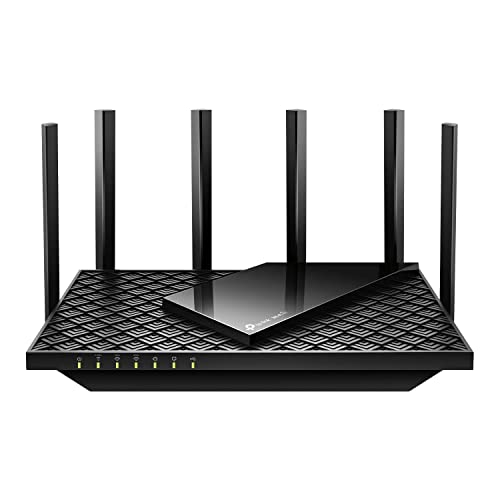
True Score
79794Experts
862kCustomers
Mixed Reviews
 SAVE $70$199.99$129.99
SAVE $70$199.99$129.99Read More
Snapshot
Reasons to Buy
- Good WiFi speeds
- Adequate range
- Simple set up
Reasons to Avoid
- Average download speeds
- Limited coverage
- Subscription-based security solutions
Specifications

# of LAN Ports 4 
Frequency Bands 2.4 GHz, 5.0 GHz, 6.0 GHz 
MU-MIMO Support Yes 
Wireless Standard AC, AX 
Mesh System Yes 
Quality of Service Prioritization Yes 
# of Phone Ports n/a 
# of WAN Ports 1 
App Compatible Yes 
Available Storage n/a 
Band Technology Tri 
Data Encryption Type WPA3 
Energy Star Certified n/a 
Integrated Modem No 
LAN Ports Gigabit Ethernet 
Number of Antennas 6 
Parental Controls Yes 
Processor Cores Triple 
Processor Speed 1.7GHz 
WiFi Range 2500 sq.ft 
WiFi Speed 2.4GHz 
Wired Speed 1000 Mb All Specs
Test Results
2.4 GHz Download speed (Mbits/s) 65 5 GHz Download speed (Mbits/s) 309 6 Ghz Download speed (Mbits/s) 318 Latency (ms) 9 Router Range (ft) 60 2.4 GHz Upload speed (Mbits/s) 0 5 GHz Upload speed (Mbits/s) 0 6 Ghz Upload speed (Mbits/s) 0 All Tests
All Retailers
- $129.99$200Save $70
- $129.99$180Save $50
- $159.00
Our Verdict
The TP-Link Archer AXE75 offers Spectrum users an efficient and affordable router solution, ideal for medium-sized homes. Its tri-band technology provides a 6 GHz download speed of 317.9 Mbits/s, suitable for online activities like HD video streaming and casual gaming. This router is well-suited for remote workers and tech enthusiasts needing a reliable home network that won’t stretch your budget.
If your household has multiple devices that handle various internet activities, the Archer AXE75’s capabilities across the 2.4 GHz and 5 GHz bands will keep everyone online. With download speeds of 65.05 Mbits/s on the 2.4 GHz band and 309.1 Mbits/s on the 5 GHz band, it handles everyday online tasks, ensuring seamless browsing, streaming, and gaming. Since it offers a modest range of 60 ft, it’s effective in smaller to medium spaces, and it features an excellent latency of just 9 ms for quick online interactions.
Compared to the Eero Max 7, the Max 7 is a faster solution with greater coverage, delivering higher 6 GHz speeds and a wider range. It can handle more intense online activities but is more expensive, so if you just need something reliable for general use and casual gaming, the Archer AXE75 is an appealing choice.
The Archer AXE75 balances affordability, respectable speeds, and the advantages of Wi-Fi 6 technology, making it a compelling option for Spectrum users focused on value and consistent home connectivity. Its limited range makes it best for smaller residences, but its overall value and advanced features make it a strong candidate for ensuring robust and adaptable internet access.
Read Less

Best Overall

Runner Up

Best Value

Best Budget

Best Mid-Range

Premium Pick
Eero Max 7
Best For Fiber Optic
Eero Max 7 is outstanding for Spectrum users needing a router for intense online tasks, offering superb 6 GHz performance for streaming and gaming.
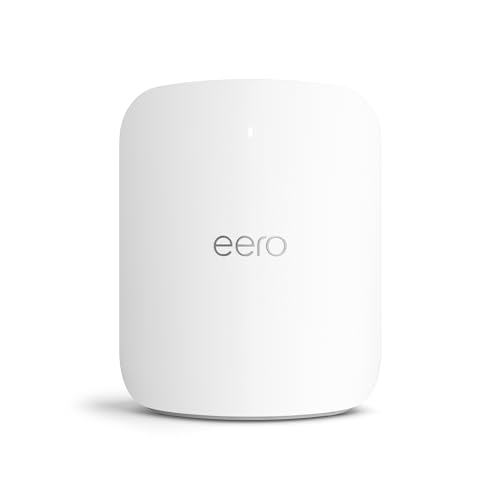
True Score
79797Experts
85317Customers
Mixed Reviews
 $599.99
$599.99Read More
Snapshot
Reasons to Buy
- Exceptional Download WiFi Speed
- Easy Installation and Configuration
- Low Latency
Reasons to Avoid
- Poor 2.4 GHz Upload Speeds
- Short Range of Coverage
- Limited Port Space
Specifications

# of LAN Ports 4 
Frequency Bands 2.4 GHz, 5.0 GHz, 6.0 GHz 
MU-MIMO Support Yes 
Wireless Standard BE 
Mesh System Yes 
Quality of Service Prioritization No 
# of Phone Ports n/a 
# of WAN Ports 1 
App Compatible Yes 
Available Storage 4000MB 
Band Technology Tri 
Data Encryption Type WPA2-Personal, WPA3-Personal 
Energy Star Certified No 
Integrated Modem No 
LAN Ports 2 Gb Ethernet 
Number of Antennas 10 
Parental Controls Yes 
Processor Cores Quad 
Processor Speed – 
WiFi Range 2500 sq.ft 
WiFi Speed 4.3 Gb 
Wired Speed 10000 Mb All Specs
Test Results
2.4 GHz Download speed (Mbits/s) 96 5 GHz Download speed (Mbits/s) 1,078 6 Ghz Download speed (Mbits/s) 1,223 Latency (ms) 7 Router Range (ft) 90 2.4 GHz Upload speed (Mbits/s) 75 5 GHz Upload speed (Mbits/s) 411 6 Ghz Upload speed (Mbits/s) 638 All Tests
All Retailers
- $599.99
- $599.99
- $599.99
Our Verdict
If you have Spectrum and need a router to handle bandwidth-heavy activities, the Eero Max 7 is a superb choice thanks to its 6 GHz performance. Its 6 GHz band offers best-in-class download speeds of 1222.5 Mbits/s and upload speeds of 638 Mbits/s. It’s suitable for large homes where tech-savvy users and competitive gamers require fast wireless connections for streaming, immersive gaming, and smart home integration.
The Eero Max 7’s tri-band setup also delivers notable performance on the 5 GHz band with superior 1078.5 Mbits/s download and 410.6 Mbits/s upload speeds, capable of handling a wide array of tasks without interference. On the 2.4 GHz band, it provides sturdy speeds of 95.9 Mbits/s for downloads and 74.8 Mbits/s for uploads, ensuring steady connectivity for routine online activities.
With its minimal latency of just 7 ms, the router ensures swift response times, essential for uninterrupted gaming and smooth video conferencing. Its coverage is 90 ft, ideal for small to medium-sized spaces.
If you compare it to the Netgear Nighthawk RAXE300, the RAXE300 also features 6 GHz capabilities but is affordable. The Max 7 has better 6 GHz speed and efficiency, so while both serve modern households well, the Eero Max 7 is the better option if your lifestyle involves streaming, virtual reality, and multiple connected devices.
The Eero Max 7’s unmatched speed in the 6 GHz band caters to users needing the highest streaming quality, gaming performance, and extensive internet use. Despite a steep price tag, its superior performance makes it a great choice if you need a comprehensive, high-speed internet solution on the fastest Wi-Fi band for all your devices.
Read Less
Which Criteria Matters for Testing Best Router for Spectrum?
By focusing on these criteria (2 required, 2 nice to have), anyone can quickly and easily compare these routers and how they’ll perform. This helps you make an informed decision and purchase a router that will meet your needs.
| CRITERIA | RANGE | REQUIRED | DEFINITION |
|---|---|---|---|
| 2.4 GHz Download Speed | > 50 Mbits/s | Yes | The maximum speed that the router can reach when downloading on the 2.4 GHz band. |
| 5 GHz Download Speed | > 200 Mbits/s | Yes | The maximum speed that the router can reach when downloading on the 5 GHz band. |
| Router Range | > 50 ft | No (Nice to have) | How far a device can be from a router before the signal starts degrading. It is worth noting that 2.4 GHz reaches further than 5 GHz. |
| Latency | < 30 ms | No (Nice to have) | The delay that is created by a signal being sent by the router and then received. |
Our Trusted Data Sources
We looked at 120+ router reviewers and found that 46 are trustworthy (60%+ Trust Rating). The three we have listed below are our most trusted for routers.
- James Morris – Kit Guru, LinkedIn
- Matt Spencer – TechGearLab, LinkedIn
- Brian Nadel – Tom’s Guide, MuckRack
Interested in a comprehensive analysis of our data sources? We’ve got you covered. Below, you’ll find a detailed list of every router review website we’ve identified, organized by their respective Trust Ratings from highest to lowest. But we didn’t stop there. We’ve meticulously reviewed each publication and verified the data by checking whether the authors have bio links to MuckRack or LinkedIn. We’re committed to not only checking the facts but ensuring their veracity.
Router Test Data & Results
Disclaimer:
Evaluating router performance is more than hardware analysis. While hardware tests are straightforward, the challenge lies in contextualizing the results within the limits of real-world usage. Routers operate under conditions that testers cannot fully standardize, including variations in Internet Service Providers (ISPs), network traffic congestion, discrepancies between advertised and actual internet speeds, and the physical layout of homes. These factors introduce a degree of unpredictability, making it hard to draw universal conclusions. As such, our router recommendations aim to provide useful general guidance, accommodating a wide range of home environments and internet setups.
1. 2.4 GHz Download Speed (Mbits/s)
2.4 GHz Download Speed
> 50 Mbits/s
Acceptable range of performance
Definition: The top speed the router reaches downloading on the 2.4 GHz band.
Units of Measurement: Mbits/s (megabits per second)
Tools to Measure: Speed-checking software
Why It’s Important:
For older devices or for connecting at a longer range, the 2.4 GHz frequency is the only one that you’ll be able to use, so it should have usable speed.
The oldest and slowest of the bands on a router is the 2.4 GHz band, but it sticks around for a reason. Generally speaking, while this band features the slowest available speeds and has the lowest bandwidth, but also reaches out the furthest. It’s not the best band to connect to connect if you need high speeds, but if you just need to be connected for light browsing or anything that’s low bandwidth, it works. Alternatively, if you own a lot of old devices, this band may be the only band they can “see” and therefore, use.
Given the age of the band, top speeds on 2.4 GHz cap out very quickly. We recommend a speed of at least 50 Mbits/s, but if you aren’t really going to be using this band for anything other than checking web pages, you can go lower. It’s worth noting, though, that this might lead to a more frustrating and laggier time on modern sites with lots of scripting and high-quality images.
2.4 GHz Download Speed (Mbits/s; higher is better; 0 = No Data)
2. 5 GHz Download Speed (Mbits/s)
The much faster 5 GHz band offers up much greater bandwidth and is much, much better at meeting high-speed demands. Streaming high-quality video, using streaming services, gaming, downloading large files and games – the 5 GHz band is what makes all of these activities quick and bearable. It reaches a lower range than the 2.4 GHz band, but it’s also much faster, so you’ll use it more, especially on newer devices that actually support the band.
Given how much you’ll be using this band, we recommend a speed of at least 200 Mbits/s to ensure you’re able to enjoy streaming and gaming on at least a few devices simultaneously. Any lower and you start to run into real bottleneck concerns, such as endless buffering, lagging, or drops in connection.
5 GHz Download Speed
> 200 Mbits/s
Acceptable range of performance
Definition: The top speed the router reaches downloading on the 5 GHz band.
Units of Measurement: Mbits/s (megabits per second)
Tools to Measure: Speed-checking software
Why It’s Important:
This band is used by most modern devices and offers greater speeds that enable activities like gaming and HD streaming on multiple devices.
5 GHz Download Speed (Mbits/s; higher is better; 0 = No Data)
3. Router Range (ft)
Router range is exactly what the name suggests: how far can you get from the router before you start experiencing issues with your connection? The complicating factor is the simple fact that range depends on the band you’re using. 2.4 GHz is a band that offers greater range, so it gives tests results that show a greater range than tests that use the 5 GHz band. In general, our research found most publications used the 5 GHz band, so our recommendations are based on that.
As such, we recommend your router have a range of at least 50 ft. This gives you a good “bubble” around the router that you can connect to, but it’s important to know that things like the walls in your home can cause issues. Thicker walls block more signal, thinner walls block less. Some materials will also do a better job than others will at stopping signal, so if you see a router with a range of 65 ft, know that it might not reach that far in your home. It could reach further – or not nearly as far. This is also why you get dead zones in your home – it’s a matter of geometry and materials.
Router Range
> 50 ft
Acceptable range of performance
Definition: The distance the router transmits reliable signal out to before performance and speed degrades.
Units of Measurement: Feet (ft)
Tools to Measure: Measuring Tape
Why It’s Important:
Range impacts how far you’ll get a reliable connection in your home, and whether you’ll need extenders or not.
Router Range (ft; higher is better; 0 = No Data)
4. Latency (ms)
Latency
< 30 ms
Acceptable range of performance
Definition: The time it takes for the router to send and then receive signals.
Units of Measurement: Milliseconds (ms)
Tools to Measure: Speed-checking software
Why It’s Important:
Latency is important to reduce delay when gaming and video conferencing.
On a router, latency refers to how long it takes for the router to send out and receive a signal. The longer it takes, the more delay there is between you sending and receiving data, which can introduce lag in video games and also makes video conferencing harder since the person you’re speaking with now has to contend with your delay and vice versa. If you’ve ever spent a call talking over someone because you don’t know they started talking a second ago, that’s latency.
For that reason, we recommend a latency below 30 ms. As low as you can get it is obviously preferable, but latency is another aspect of your internet connection that is hard to manage. Latency differs to every single place you connect to, and every ISP has its own latency they “add” because you have to connect to their service too. Latency creeps in from your ISP, from the site you’re requesting data from, from your router, and from your own onboard Wi-Fi antenna – and that’s just to name a few sources. If you’re gaming, you also have a delay introduced by your connection to game servers and the delay that exists on a hardware level when you input commands.
Latency (ms; lower is better; 0 = No Data)
Best Router for Spectrum: Mistakes To Avoid
- Ignoring The Router’s Standard: Buying a router with an outdated standard can limit network speed, range, and device compatibility. It’s important to choose a router that supports at least Wi-Fi 5 (802.11ac), though Wi-Fi 6 or Wi-Fi 6E are preferable for future-proofing.
- Buy Enough Coverage: Underestimating the size of the area the Wi-Fi needs to cover can lead to dead zones while overestimating can mean spending more than necessary. Consider the size of your home, the layout, and any potential interference sources. Mesh Wi-Fi systems can be a good solution for larger homes or homes with thick walls that suffer from lots of dead zones.
- Chasing Top-Shelf Specs With Budget Internet: High-performance routers can be expensive, and the highest specs may not always be necessary, especially if you’re using a budget internet plan. Check your plan’s listed internet speed and buy to suit that. Also, check how many devices you plan on having connected and how you use them (a lot, or just a little.) Paying for features you don’t need gets expensive fast.
- Ignoring Wired Ports And Non-Wireless Connectivity: Consider how many wired devices (e.g., desktop computers, gaming consoles, smart TVs) you plan to connect. Ensuring the router has enough Ethernet ports is crucial. Additionally, some routers offer USB ports for connecting printers or storage devices directly to the network.
The Best Router for Spectrum Tests Compared
Product |
True Score
|
2.4 GHz D/L Speed
|
5 Ghz D/L Speed
|
6 GHz D/L Speed
|
Range
|
Latency
| |
|---|---|---|---|---|---|---|---|
| 83 |
|
|
|
|
| $99.99 $250 $150 |
| 83 |
|
|
|
|
| $164.99 $300 $135 |
| 80 |
|
|
|
|
| $456.99 |
| 79 |
|
|
|
|
| $129.99 $200 $70 |
| 79 |
|
|
|
|
| $599.99 |






